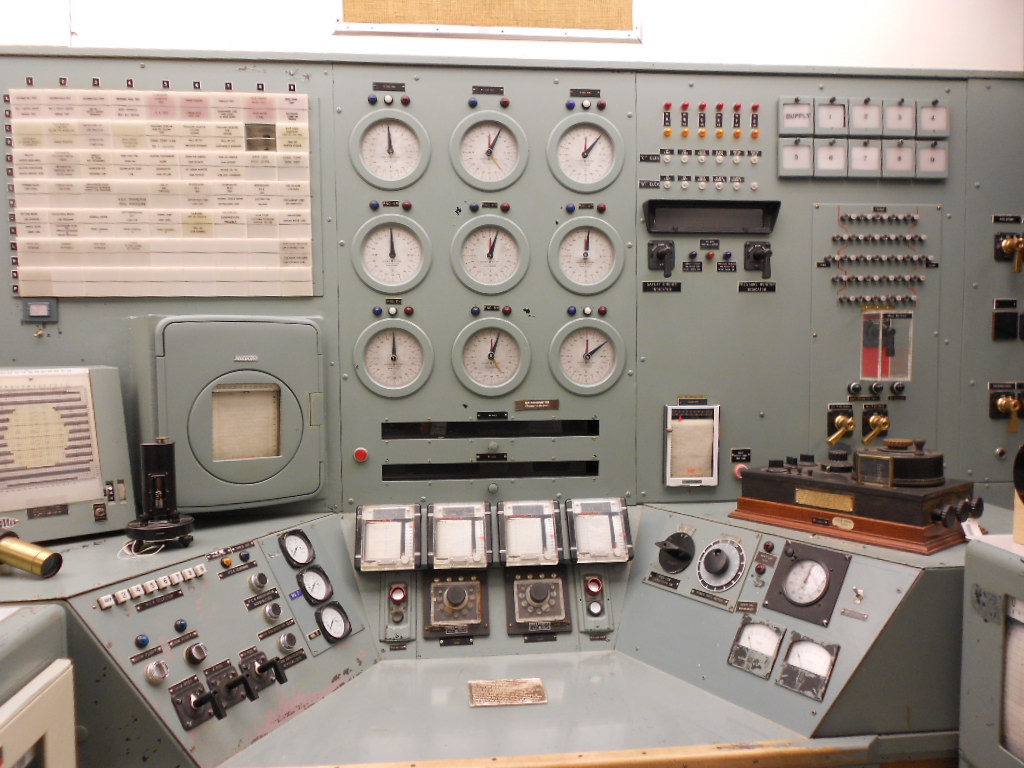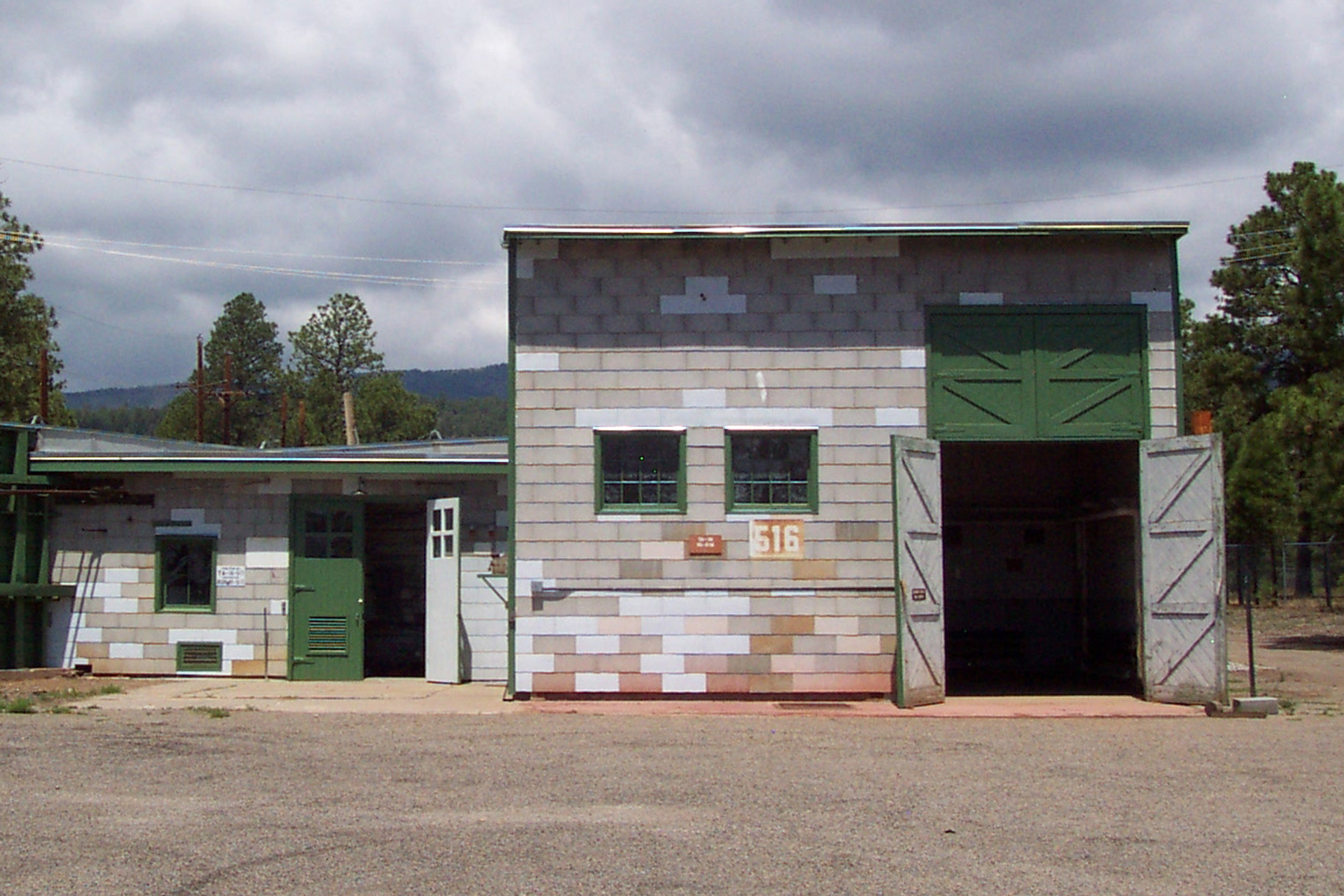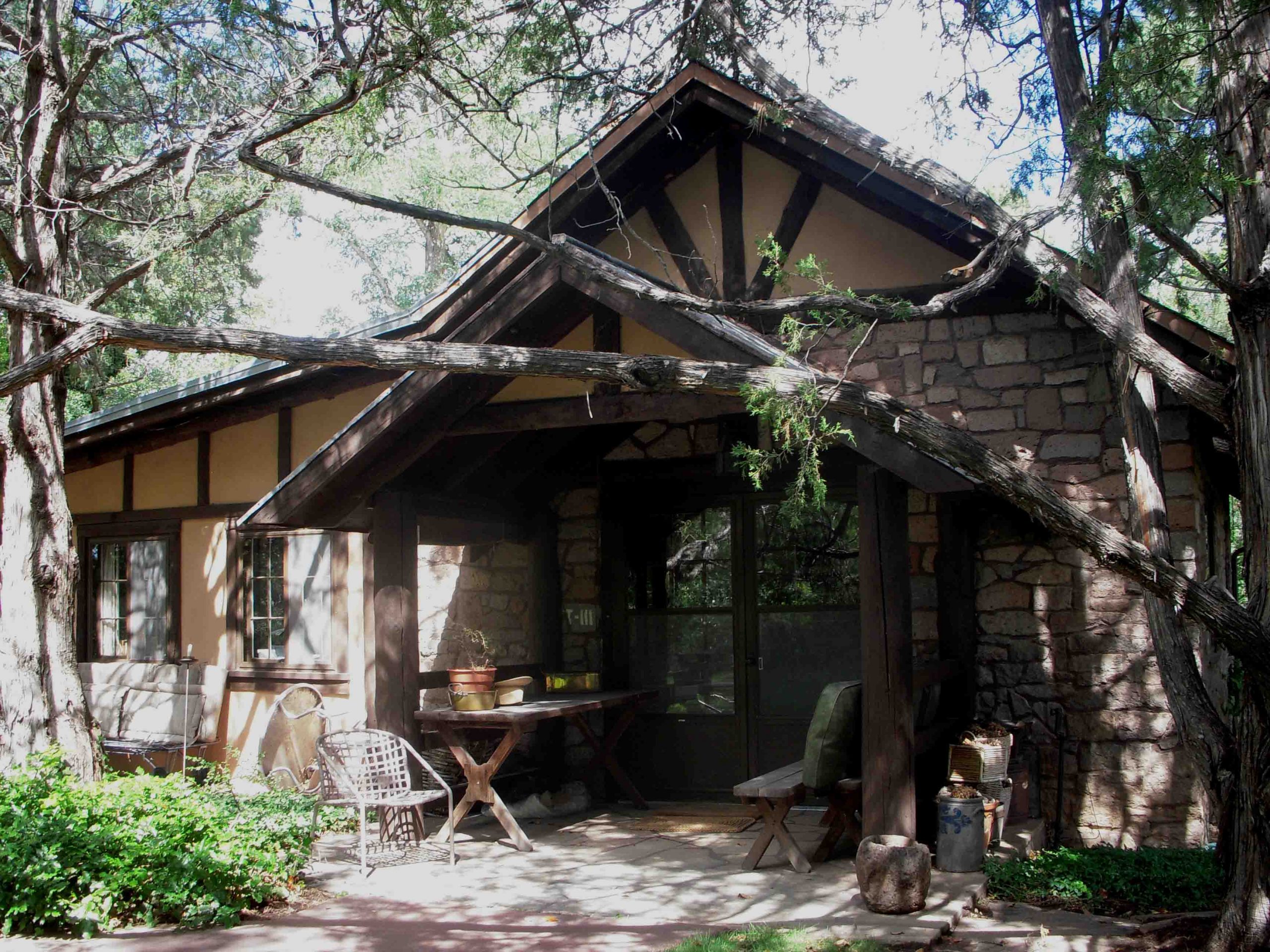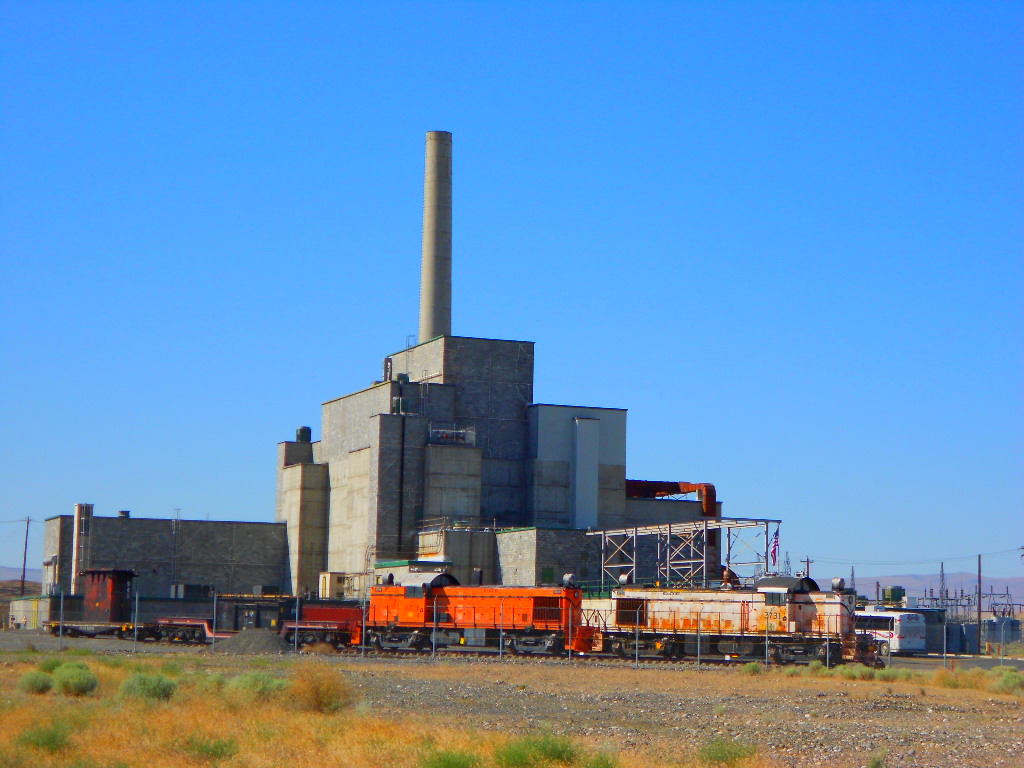
The Making of the Manhattan Project Park
The making of the Manhattan Project National Historical Park took more than five times as long as the making of the atomic bomb itself (1942 to 1945). Fifteen years after the first efforts to preserve some of the Manhattan Project properties at Los Alamos, New Mexico, in 1999, Congress enacted the Manhattan Project National Historical Park Act, signed by President Obama on December 19, 2014. The following provides the story of how the park was created and a preview of coming attractions.
Mandate for a Clean Sweep
After the end of the Cold War in 1989, Congress directed the Department of Energy (DOE) to clean up decades of contamination at its nuclear production facilities. At Los Alamos, the V Site (where the atomic bombs were assembled), was a cluster of garage-like wooden structures left over from the Manhattan Project, far from public view. The main property had high-bay doors to accommodate the “Gadget,” the world’s first atomic device tested at the Trinity Site on July 16, 1945. Along with dozens of other Manhattan Project properties, the Los Alamos National Laboratory (LANL) slated the V Site buildings for demolition.
LANL officials estimated that the costs just to stabilize the buildings would be $3 million. “Preservation would be a waste of taxpayers’ money1,” declared LANL’s Richard Berwick. When the State of New Mexico concurred in the demolition, the buildings were doomed.
Rescuing the V Site Properties
The legacy of the Manhattan Project was in the crosshairs. Were any of the original Manhattan Project properties at Los Alamos going to be saved? Working for the Department of Energy, I called the Advisory Council on Historic Preservation (ACHP) for advice. The Council agreed to add a day to its Santa Fe meeting that fall to visit the V Site.
On November 5, 1998, the Advisory Council members were astonished by the contrast between the simplicity of V Site properties and the complexity of what took place inside them. The group concluded that the V Site would not only qualify as a National Historic Landmark but as a World Heritage Site similar to the Acropolis in Athens or the ancient city of Petra in Jordan. Somewhat chastened, the Los Alamos National Laboratory agreed to take the cluster of V Site buildings off the demolition list. However, funds to restore them would have to come from elsewhere.
Save America’s Treasures
In 1998 Congress and First Lady Hillary Clinton decided to commemorate the millennium by awarding Save America’s Treasures grants to preserve historic federal properties in danger of being lost. In a competitive process run by the National Park Service, the Department of Energy (DOE) was awarded $700,000 to restore the V Site properties.
However, there was a catch-22: the grant had to be matched by non-federal funds, but federal employees cannot solicit funds and DOE has no foundation authorized to do so. Rather than have DOE forfeit the grant, I decided to leave a 25-year career with the federal government in January 2000 to raise the funds and segue to my next “real” job.

Restored V Site at Los Alamos
Gaining Traction
The fund-raising project quickly evolved into a much bigger effort. To galvanize public and political attention, in March 2001 I enlisted the Los Alamos Historical Society to collaborate on a weekend of events called “Remembering the Manhattan Project.” The centerpiece was the “Louis Slotin Sonata,” a new play by Paul Mullin about a Manhattan Project scientist who died in a criticality experiment at Los Alamos in early 1946. The play and a heated discussion afterwards was covered by the New York Times and other press, bringing the Manhattan Project to national attention.
In February 2002, I founded the Atomic Heritage Foundation (AHF), a nonprofit in Washington, DC dedicated to preserving and interpreting the Manhattan Project. Richard Rhodes, Pulitzer Prize-winning author of The Making of the Atomic Bomb, helped open doors to Senators Jeff Bingaman (D-NM), and Pete Domenici (R-NM). To increase interest in preserving the Manhattan Project, in April 2002 we convened a symposium in Washington, DC that was covered by C-SPAN worldwide.
On September 30, 2003, Senators Bingaman, Maria Cantwell (D-WA), and Patty Murray (D-WA), introduced legislation to study the potential for including the Manhattan Project in the National Park System. On the same day, Congressman Doc Hastings (R-WA), introduced similar legislation in the House. Congress passed the study bill in the fall of 2004 and President George W. Bush signed it despite the administration’s opposition to any new parks.
For more than a decade, the Congressional delegations from New Mexico, Washington and Tennessee were a very strong, bipartisan team. Their commitment to the park was critical at every juncture over the next decade but especially in the final weeks of the Congress. The last major public lands omnibus legislation was in 2009; since then very few park bills had been passed. The Senate had a long list of bills that it wanted to attach to the NDAA along with the Manhattan Project National Historical Park. However, efforts to create a small “package” of other bills failed in 2013. Finally, in December 2014, the House passed the legislation as part of the “must pass” 2015 National Defense Authorization Act.
Attaching a large public lands “package” was risky as there was strong opposition in the Senate to expanding public lands and creating new parks. With several close calls in the days before its passage, this time the strategy succeeded. Congress passed the NDAA with a robust “package” of six new national park units, nine park expansions and dozens of other public lands provisions. On December 19, 2014, the President signed the legislation into law.
The new Manhattan Project National Historical Park has units at Los Alamos, NM, Oak Ridge, TN, and Hanford, WA. During World War II, these “secret cities” were not on any map even though some 130,000 people lived in them.
The park will be officially established in late 2015 when the Departments of Energy and Interior enter into an agreement concerning their respective roles, public access and other issues.
Preview of the Park
The new park will focus on three major sites: Los Alamos, NM, where the first atomic bombs were designed; Oak Ridge, TN, where enormous facilities produced enriched uranium; and Hanford, WA, where plutonium was produced. There are over 40 properties that are officially designated as part of the park with provision for adding others later.
Los Alamos, NM
The new park includes 13 properties in the Los Alamos community, many of them originally built by the Los Alamos Ranch School in the 1920s. The government took over the school’s properties in 1943 for the Manhattan Project. The seven former Masters’ cottages became the homes of the top-echelon scientists and military leaders. Because these cottages were the only housing with bathtubs, the street became known as Bathtub Row.
The cottage where J. Robert Oppenheimer and his family lived could be the “jewel in the crown” of the visitors’ experience. Visitors are also welcome at the Guest House, now the Los Alamos Historical Society Museum, and the Fuller Lodge, a handsome ponderosa pine structure that was a social center for the Manhattan Project.

Oppenheimer House, Los Alamos
More than a dozen other properties are owned by the Los Alamos National Laboratory. Public access to these properties could be limited for the first few years to address security issues. The V-Site buildings, saved from demolition in 1998 and restored in 2006, are humble garage-like structures were where the “Gadget” was assembled. The “Gadget” was the initial plutonium-based bomb that was tested at the Trinity Site on July 16, 1945.
A companion facility to the V Site is the Gun Site used to develop and test the “Little Boy” or uranium-based bomb. The gun-type design fired a small projectile of uranium into a greater mass to create an explosion. The Gun Site is undergoing reconstruction but will eventually have a concrete bunker, periscope tower, canons and a firing range.
Oak Ridge, TN
The mission of the Clinton Engineer Works was to produce enriched uranium, one the core ingredients of an atomic bomb. Mammoth plants at Y-12 and K-25 used different techniques to produce enriched uranium. While security is an issue now, visitors will eventually be able to tour the remaining “Calutron” building at Y-12. While the mile-long K-25 building was demolished last year, plans are to recreate a portion of it for visitors.
A third site at Oak Ridge is the X-10 Graphite Reactor, a pilot-scale reactor and prototype for the Hanford plutonium production reactors. Visitors will be able to see the former Guest House (later named the Alexander Inn) built to accommodate distinguished visitors such as General Leslie Groves, Enrico Fermi, and Ernest O. Lawrence. Recently restored as a residence for seniors, the lobby will have Manhattan Project photographs and other memorabilia.

X-10 Site, Oak Ridge
Hanford, WA
There are two iconic Manhattan Project properties at Hanford. The B Reactor, the world’s first full-scale plutonium production reactor, has been welcoming visitors for several years. There many interpretive displays and models that the Atomic Heritage and B Reactor Museum Association have developed. For example, there is an interactive model of the B reactor and the dozens of support buildings that once surrounded it. There is also a cutaway model of the reactor core showing the lattice of uranium fuel rods, graphite blocks, control rods and other features.
The second property is the T Plant, a mammoth “Queen Mary” of the desert used to chemically separate plutonium from irradiated fuel rods. It was one of the first remotely controlled industrial operations. Prospects are that the public will be able to visit a portion of the plant over time.
In addition, four pre-World War II properties located along the Columbia River will be preserved: the Hanford high school, White Bluffs bank, an agricultural warehouse owned by the Bruggemann family, and an irrigation pump house. Here visitors will hear the stories of the pioneering agricultural families as well as the Native Americans who lived, hunted and fished and camped near the Columbia River.

B Reactor, Hanford
At each site, visitors will be able to experience where people lived—in tents, huts, trailers, barracks, and dormitories or for the lucky ones, houses. In the communities of Richland, WA and Oak Ridge, TN, hundreds of “Alphabet” houses built from the same blueprints have been home for families for over seven decades.
For the Atomic Heritage Foundation2, the creation of the Manhattan Project National Historical Park is the culmination of 15 years of effort. Like the Manhattan Project itself, creating a national historical park has been a great collaborative effort.
Perhaps the greatest source of inspiration has been the Manhattan Project veterans themselves. To Stephane Groueff, a Bulgarian journalist who wrote the first comprehensive account of the Manhattan Project3 the participants illustrated “the American way of the time…problem solving, ingenuity, readiness for risk-taking, courage for unorthodox approaches, serendipity, and dogged determination4.” There are many lessons that we can learn from the Manhattan Project.
Please join us for a symposium to mark the 70th anniversary of the Manhattan Project on June 2 and 3, 2015 in Washington, DC. Also, please visit our “Voices of the Manhattan Project5” website with hundreds of oral histories including of principals such as General Leslie Groves and J. Robert Oppenheimer. Our “Ranger in Your Pocket6” website has a series of audio/visual tours of the Manhattan Project sites that visitors can access on their smartphones and tablets. Most of all, plan on visiting the Manhattan Project National Historical Park. Coming soon!
The FY2026 National Defense Authorization Act (NDAA) paints a picture of a Congress that is working to both protect and accelerate nuclear modernization programs while simultaneously lacking trust in the Pentagon and the Department of Energy to execute them.
While advanced Chinese language proficiency and cultural familiarity remain irreplaceable skills, they are neither necessary nor sufficient for successful open-source analysis on China’s nuclear forces.
Satellite imagery has long served as a tool for observing on-the-ground activity worldwide, and offers especially valuable insights into the operation, development, and physical features related to nuclear technology.
This report outlines a framework relying on “Cooperative Technical Means” for effective arms control verification based on remote sensing, avoiding on-site inspections but maintaining a level of transparency that allows for immediate detection of changes in nuclear posture or a significant build-up above agreed limits.